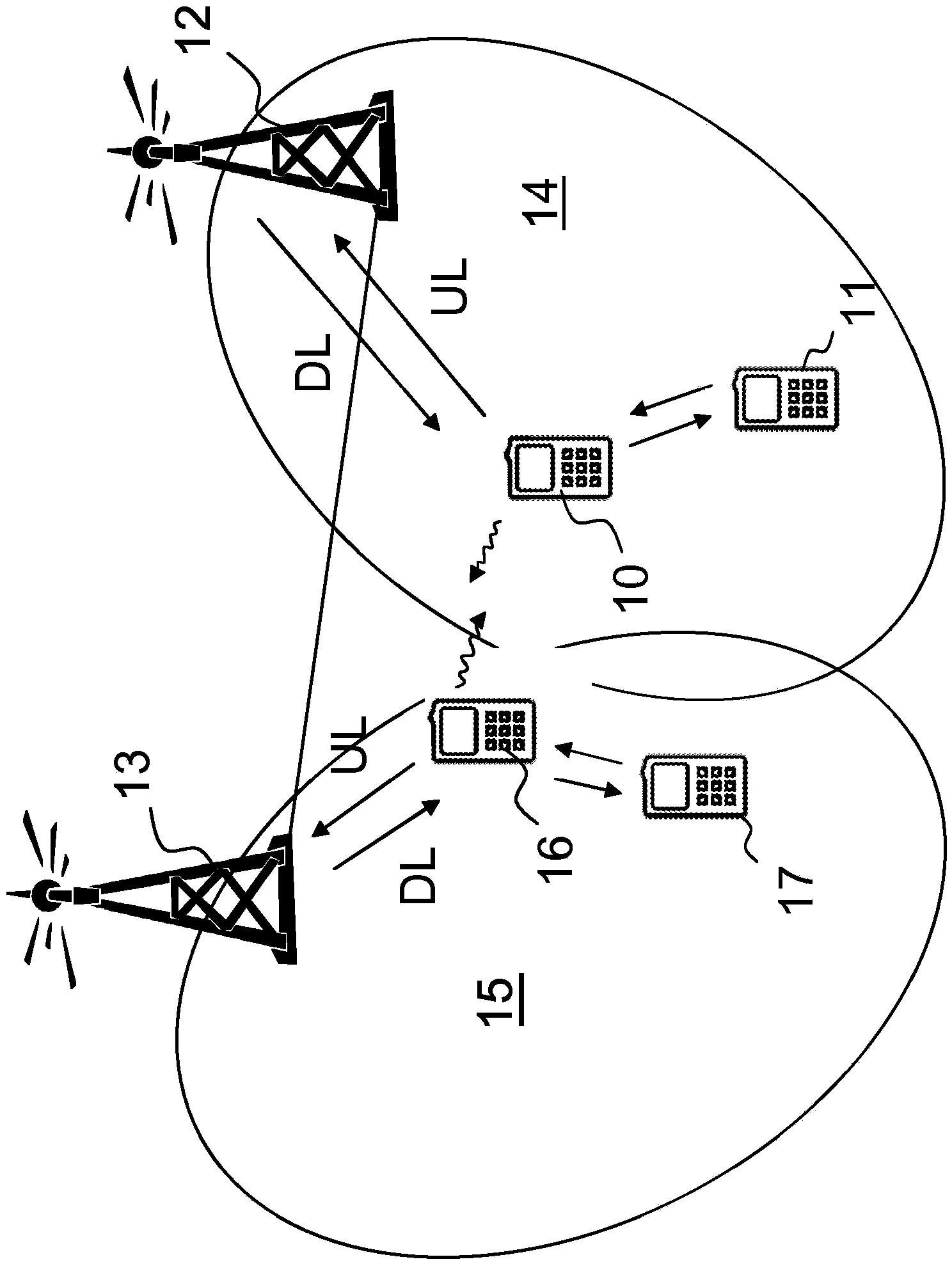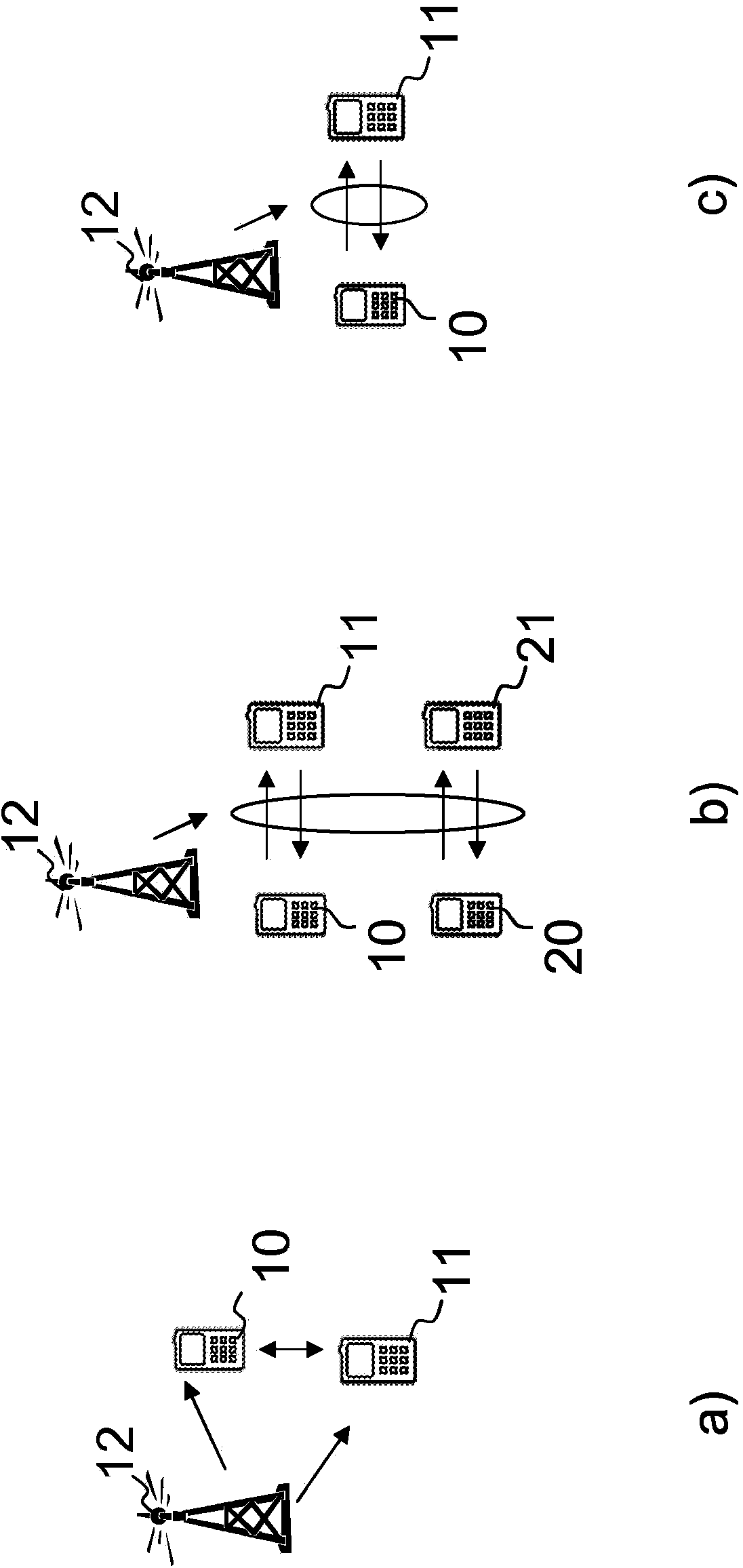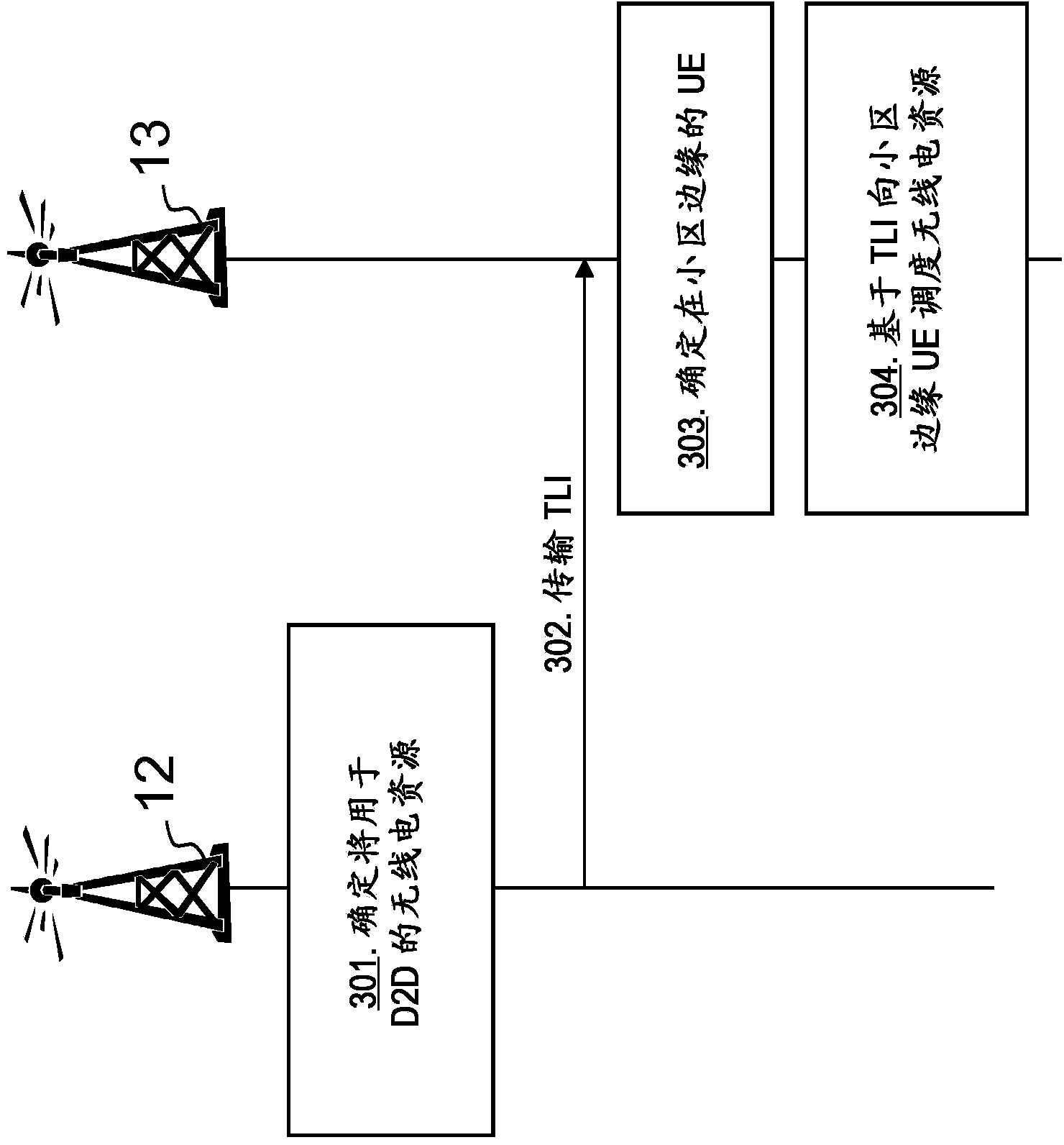Radio base stations and methods therein for handling interference and scheduling radio resources accordingly
A technology of radio base stations and radio resources, applied in wireless communication, network traffic/resource management, electrical components, etc., and can solve problems such as strong interference of RX user equipment
- Summary
- Abstract
- Description
- Claims
- Application Information
AI Technical Summary
Problems solved by technology
Method used
Image
Examples
Embodiment Construction
[0027] figure 1 is a schematic overview of a radio communication network. A number of different technologies may be used in the radio communication network, such as LTE, LTE-Advanced, 3GPP WCDMA, GSM / EDGE, WiMax or UMB, to name a few possible implementations.
[0028]The radio communication network comprises a first radio base station 12 and a second radio base station 13 . Each radio base station provides radio coverage over at least one geographical area forming the first cell 14 and the second cell 15 . The first user equipment 10 and the second user equipment 11 are served by a first radio base station 12 in a first cell 14 . The third user equipment 16 and the fourth user equipment 17 are served by the second radio base station 13 in the second cell 15 . When in cellular mode, the user equipment 10, 11, 16, 17 may transmit data in an uplink (UL) transmission over the radio interface to the respective radio base station. The radio base station 12, 13 may transmit infor...
PUM
 Login to View More
Login to View More Abstract
Description
Claims
Application Information
 Login to View More
Login to View More - R&D
- Intellectual Property
- Life Sciences
- Materials
- Tech Scout
- Unparalleled Data Quality
- Higher Quality Content
- 60% Fewer Hallucinations
Browse by: Latest US Patents, China's latest patents, Technical Efficacy Thesaurus, Application Domain, Technology Topic, Popular Technical Reports.
© 2025 PatSnap. All rights reserved.Legal|Privacy policy|Modern Slavery Act Transparency Statement|Sitemap|About US| Contact US: help@patsnap.com



